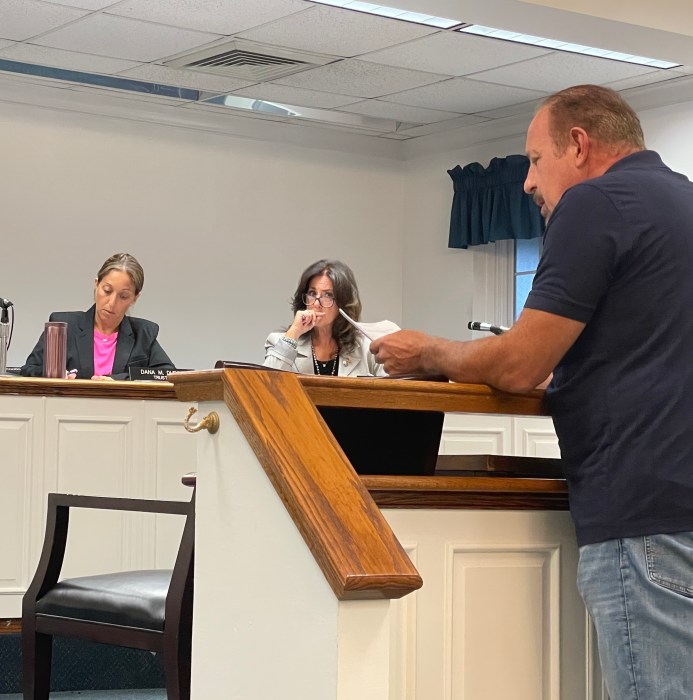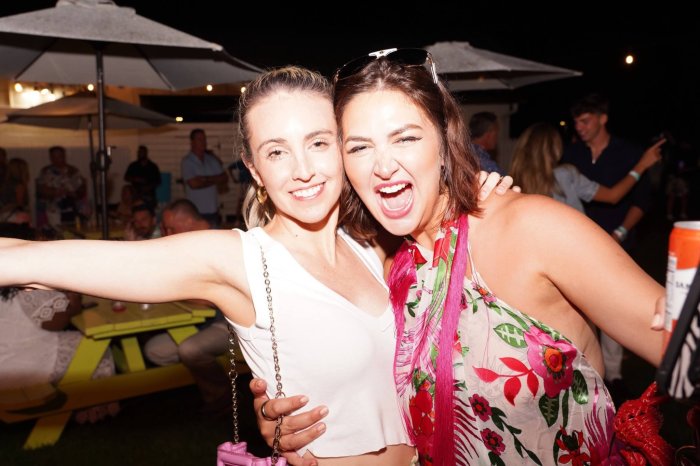“Visitation is up 300 percent,” said Harriet Gerard Clark, Raynham Hall Museum director.
“Two-thirds of them come because of reading the book by Brian Kilmeade, George Washington’s Secret Six: The Spy Ring That Saved The American Revolution, and seeing the series ‘Turn’ on A&E,” added Tom Valentine, docent, who keeps the list of visitors. Soon the series will include the story of Robert Townsend of Oyster Bay who was known as Culper, Jr. when he was a spy for George Washington.
Alex Sutherland, director of education, nailed his definition. “He was the most important spy for George Washington because he had the perfect cover. He was pretending to be a Loyalist and writing for a Loyalist newspaper and befriending British officers at his coffee shop in downtown New York while secretly collecting information.
“He worked for the Rivington Gazette, so his cover as a journalist really worked. The British officers liked to read about their social life in New York and therefore were willing to talk to him about their plans,” she explained.
The fact that Raynham Hall Museum, the homestead of the Townsends, is still here today is the subject of their current exhibit, The Founding Friends: The First 20 Years of Raynham Hall as a Museum. Over the years others have joined in the cause, which continues to this day. The exhibit highlights the vision of the people who saw that saving the building that told the story of Oyster Bay during Colonial times and the Revolutionary War was worth their commitment. Those first benefactors included: Carolyn Hill, their first board president who also helped found the Oyster Bay Historical Society; Helen Carll, Edwin N. Townsend, Julia Weekes Coles, Rita Weekes, Charlotte Earle, Kate Merle-Smith, Town Supervisor Harry Tappan; and Bertha Rose, who was also instrumental in convincing the residents of Oyster Bay Cove that opening Sagamore Hill to the public was a worthy idea.
The exhibit tells the story of the beginnings of the museum, which also spurred the start of the Townsend Society in America, the group that reaches out to all members of the founding family of Raynham Hall.
In the 20th century the original Townsend land was subdivided into the house and seven lots. For several years the Daughters of the Revolution operated a tearoom in the house to raise funds for its care. That proved not to be doable and in 1947 the DAR turned the house over to the Town of Oyster Bay. In 1950, at a tea, they ladies created the Friends of Raynham Hall, the group that takes care of the collections and interior of the house. On June 21, 1953, for the town’s tri-centennial, they officially opened the museum and began working on funding, collections and school programs, projects that have continued for 60 years.
The Townsend Society of America was founded as Townsend descendants were invited to the museum and 60 family members from 13 Long Island towns met and began the group. It was probably a good idea to know who they were since the next step was for James Abbe to appraise the collection; Dorothy Horton McGee to catalogue it, and some time after that, the Friends began purchasing Townsend family furniture to fill the house.
“Actually they had started collecting the furniture in 1947, before the museum even opened,” added Sutherland. And, the exhibit features items donated by many of the board members.

The house itself has a story to tell. There is a fascinating display on the second floor that children can handle that demonstrates the evolution of the house as it grew and shrank. In 1740. when Samuel Townsend purchased the house, he doubled it in size to make it an eight-room saltbox home. His grandson Solomon added the Victorian wing in 1850. More additions were made over the years and by 1947 it was a stately Victorian mansion that concealed its Colonial bones. The board decided to renovate the house and remove the Victorian add-ons at a cost of $65,000. The purpose was to reveal the Colonial front of the house that ties the building so securely to the time of the Revolution and the story of Culper, Jr. and helped the house to receive the designation of being a National Historic Landmark.
Raynham Hall found its place in the heart of the community from their first brochure mailing; from the 1,500 brochures they sent, they got 153 original members. Direct mail usually expects a one percent return but this was a 10 percent return. “I think they did pretty well,” said Sutherland.
They began with a treasury of $3,600 to which the Friends added funds. They started with a series of six lectures held in Christ Church Parish Hall and by 1955 they had 214 members and nine organizations as supporters. In 1969, visitation exceeded their expectations when, over a two-day open house, 600 visitors attended and the board was concerned on the strain on the house.
Today they are involved in a restoration project for the building. It has started on the exterior and is extending to the interior. One of the concerns of the board is the flooring above the dining room in the museum. When there is traffic in that second floor space, plaster filters down on the dining room below. Hence the continuation of their capital campaign.
Again the museum is going to the experts. “The ceiling is part of the restoration of the Victorian building and will be examined by specialist,” said Harriet Clark.
“The glue in the plaster dries out in older houses,” explained Theresa Skvarla, associate director.
Another exciting board project has been the restoration of the Lincoln Market, the newly acquired building to the west of the Victorian Garden of RHM. “The education center will open within the year,” said Clark. “We’ve gotten a lot of good comments on the appearance of the building,” said Valentine.
The building, formerly known as “the Mavros building,” fronted directly onto West Main Street in what could be called an abrupt manner. Today with the two display windows and discrete doorway, the streetscape seems much friendlier. It is as if passersby sensed it wasn’t the way it should have been. Now it is an inviting space that will encompass the education center and offices for the staff, which will in turn, open up the museum itself, to greater interpretation. Soon the servants and slave quarters of the differing centuries will be visible as the house gains further relevance in its story of life in Oyster Bay.
And of course, it is worth mentioning the cost of making a great museum. The current restoration being done in two phases needed $1,750,000, of which $350,000 is still needed. “So we are actively looking for generous people,” added Clark.
It is a worthy cause when you realize how many great stories the museum has to tell. Donations are always welcome. The current exhibit, sponsored by Astoria Bank, will be open through September. For more information please call 516-922-6808.
































